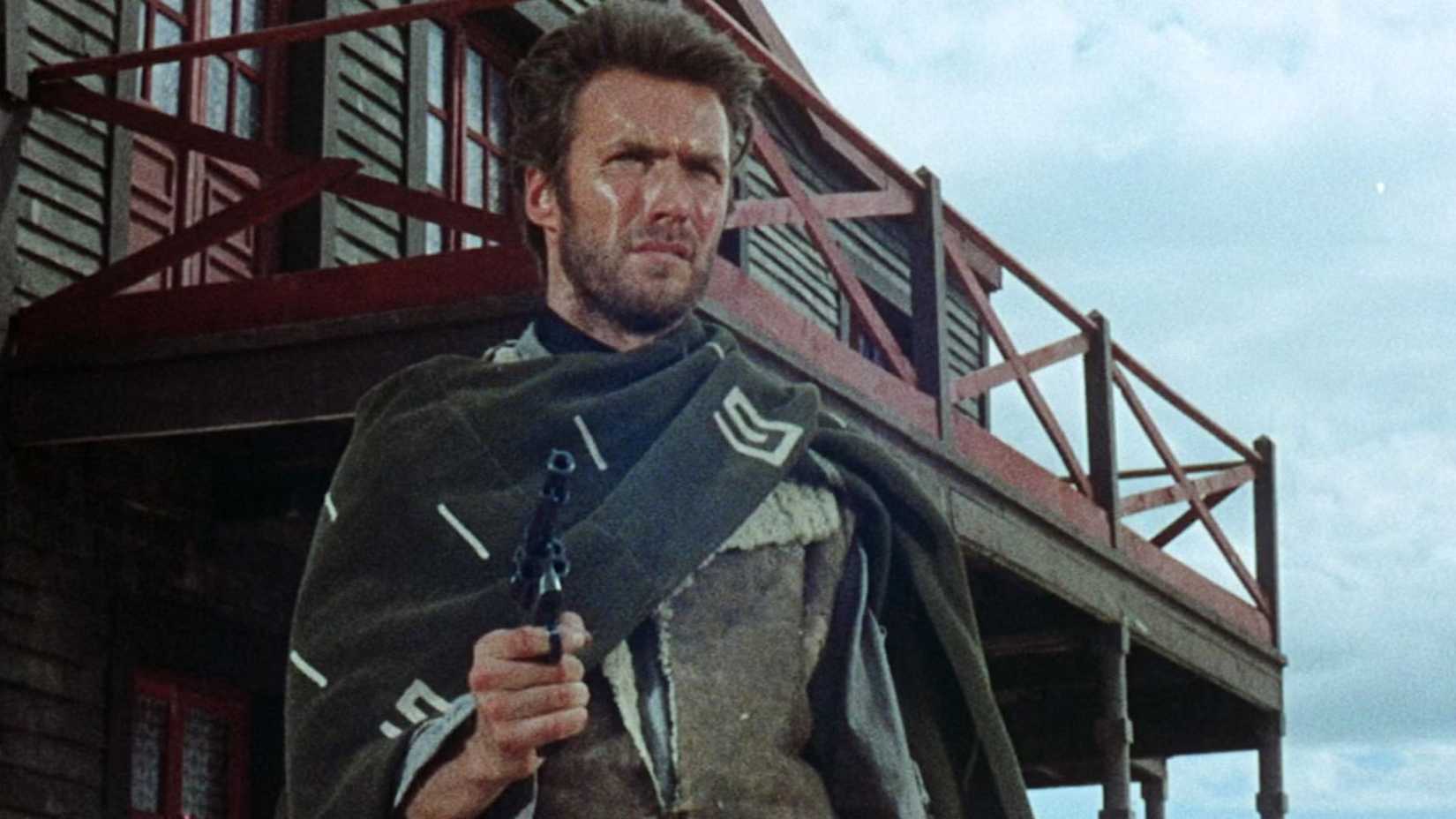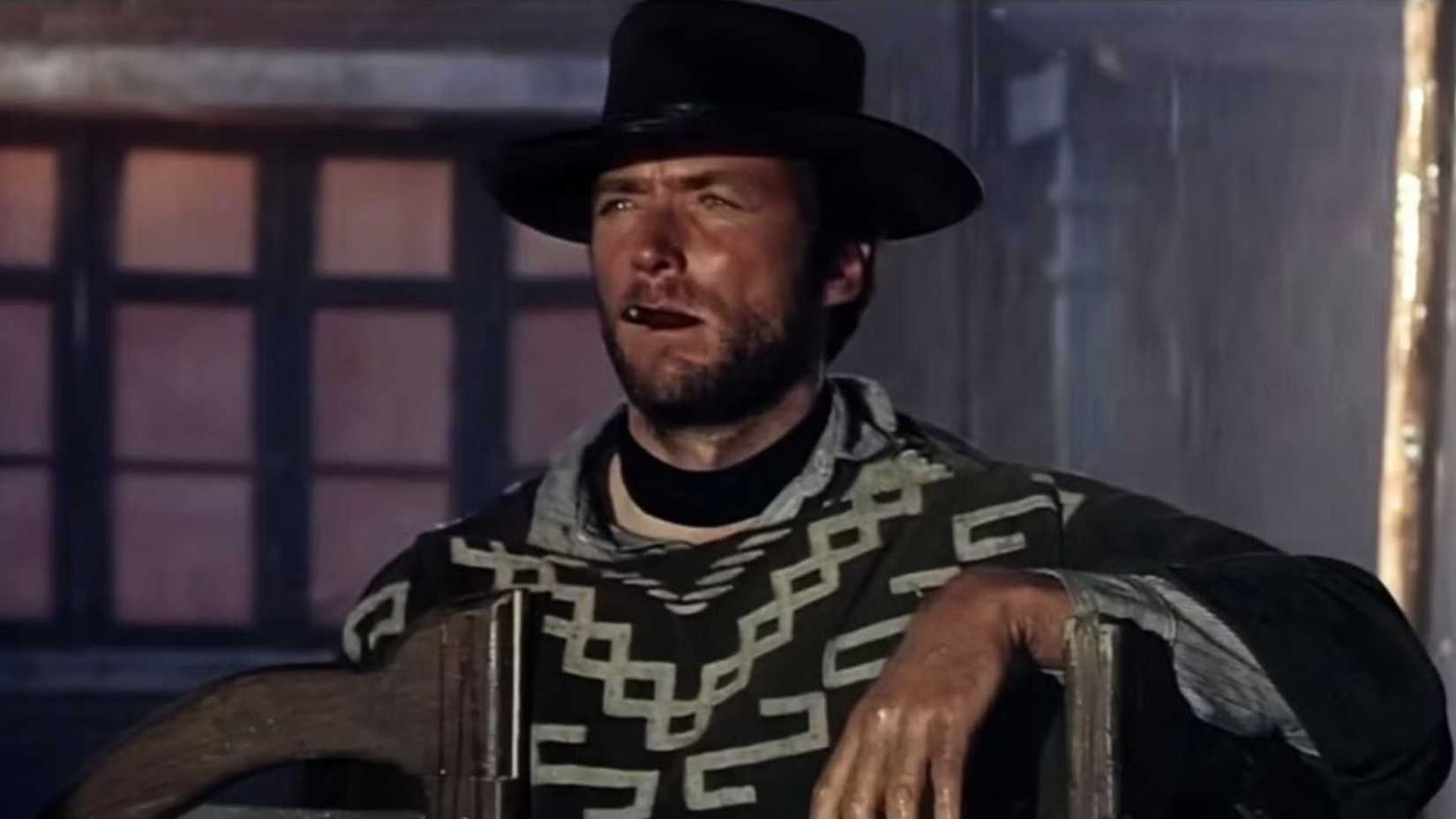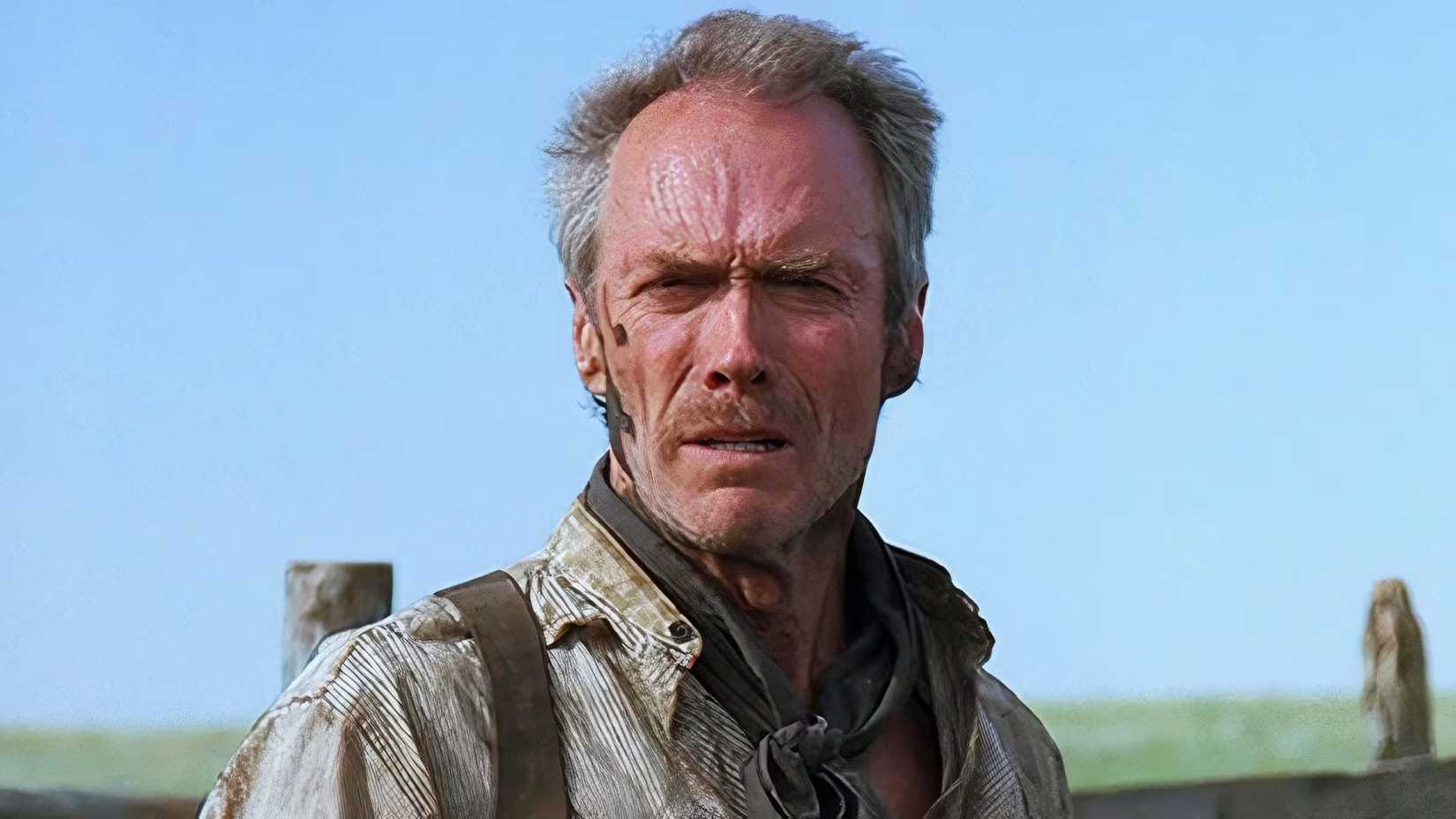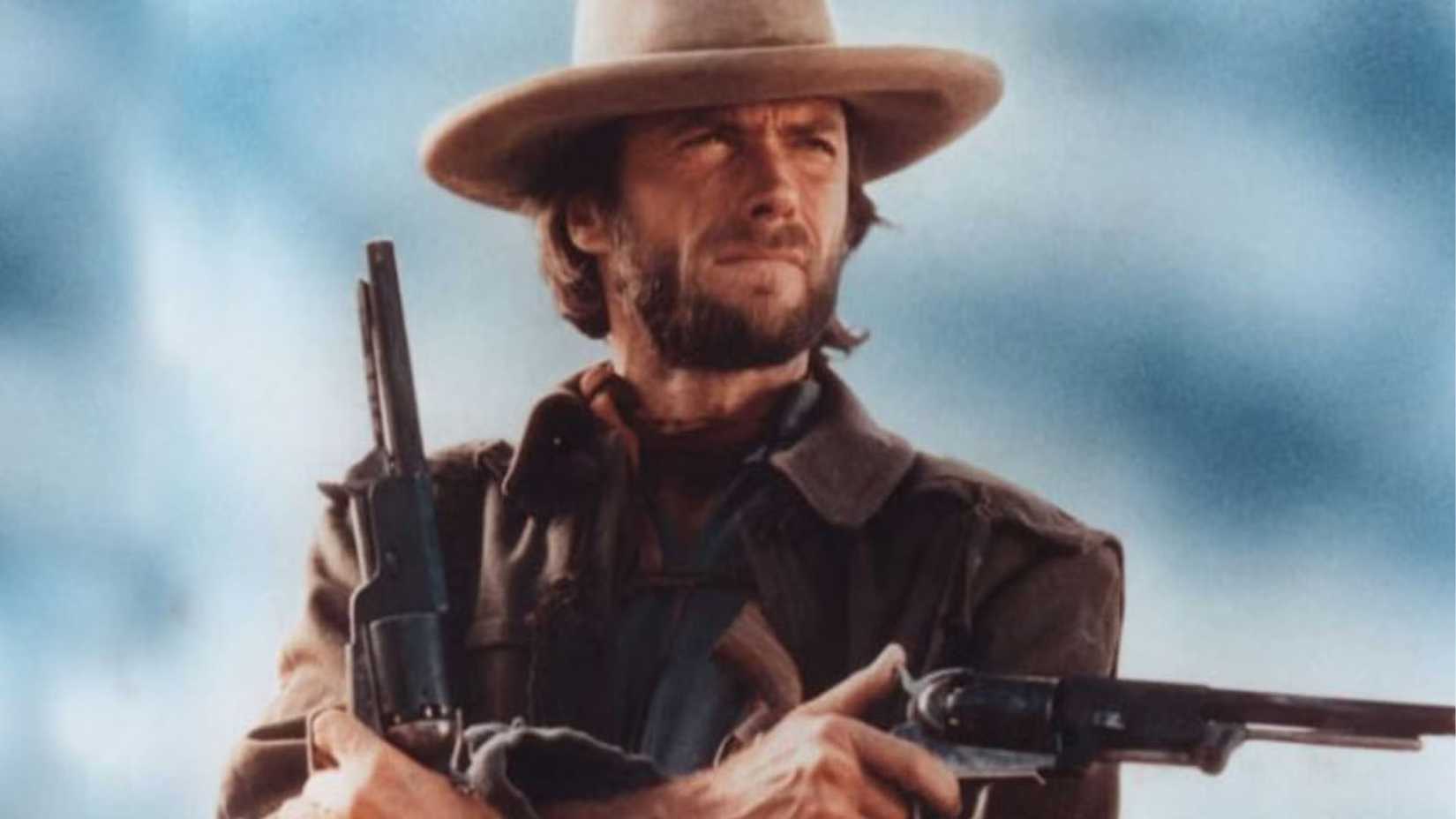
Clint Eastwood became famous for his roles in Westerns, particularly as The Man with No Name in the Dollars Trilogy. But before those films, he’d already gained recognition starring in a Western television series. It was through that show that he decided he wanted to portray Western characters in a new way.
For many years, John Wayne was the standard for Western heroes. He often played characters who were tough and imperfect, but ultimately fought for what was right. Clint Eastwood, however, took a different approach, as seen in his role as the Man with No Name. This contrast helped Eastwood revitalize the Western genre.
Clint Eastwood Chose Man With No Name To Change His Image

Before becoming famous for Fistful of Dollars, Clint Eastwood gained recognition starring in the TV series Rawhide. He played the character Ramrod Rowdy Yates for seven seasons, then took on a smaller role as the trail boss in the eighth and final season. Ultimately, though, Eastwood grew to dislike the part.
According to the book Aim for the Heart: The Films of Clint Eastwood, Clint Eastwood became tired of his role in Rawhide and wanted to move beyond playing that kind of character. In Rawhide, he consistently portrayed a traditional hero – the classic “White Hat” type often seen in Westerns.
After playing the typical good guy on Rawhide for a while, I grew tired of it. The character was always polite, helping everyone – even kissing grandmas and petting dogs! I felt it was time to play someone more complex, an antihero.
When he accepted the lead role in A Fistful of Dollars, his main request was a complex character. He didn’t want to play a traditional hero, but someone with a flawed moral compass. Essentially, he wanted to be the central figure of the story, but a protagonist who wasn’t necessarily ‘good,’ and who sometimes did good things despite his own questionable nature.
Clint Eastwood first portrayed the iconic character known as The Man with No Name in A Fistful of Dollars, which was inspired by Akira Kurosawa’s film Yojimbo. The movie features him as a mysterious stranger who comes to a troubled town and protects its people from feuding gangs. Though he rescues them, he’s far from the typical hero seen in Westerns.
Clint Eastwood Explains What Makes The Man With No Name Great

Clint Eastwood continued his role as a mysterious gunslinger, known as the Man with No Name, in two more films: For a Few Dollars More and The Good, the Bad and the Ugly. While these films all feature a character called the Man with No Name, each one is a distinct individual with his own story and circumstances.
In For a Few Dollars More, the character known as The Man with No Name works as a bounty hunter, pursuing a ruthless criminal called El Indio. Then, in The Good, the Bad and the Ugly, he’s a gunslinger caught in a three-way race with two rivals to locate a hidden fortune of Confederate gold during the Civil War.
Despite their differences, these characters share a striking similarity: they’re all the strong, silent type. They typically dress the part – think serape, cowboy hat, and boots – and often smoke. Clint Eastwood himself has noted that this lack of dialogue is key to the enduring appeal of his famous character, The Man with No Name (as detailed in Patrick McGilligan’s biography, Clint: The Life and Legend).
I aimed for a subtle performance, relying on expressions and body language to convey emotion. This character was something I’d been imagining for a while – someone enigmatic, hinting at a hidden history without revealing everything.
Clint Eastwood has said his iconic, quiet Western hero developed from his experience on the TV show Rawhide. He realized that “the less the character spoke, the more powerful and captivating he became for viewers.”
Clint Eastwood’s Antiheroes Became The Norm In Hollywood Westerns

For forty years, John Wayne defined the Western hero. Then, Clint Eastwood burst onto the scene and quickly became the genre’s biggest star, fundamentally changing Westerns. In fact, Eastwood’s portrayal of a darker, more complex antihero even upset John Wayne.
After Clint Eastwood’s film High Plains Drifter was released, John Wayne actually wrote him a letter. The movie featured Eastwood as a ghostly lawman seeking revenge. Wayne disagreed with Eastwood’s approach, believing Westerns should focus on the history of settling the West and the lives of pioneers – something he didn’t feel the film accomplished.
I always found Eastwood’s dismissal of John Wayne fascinating. He basically said Wayne just didn’t get it, chalking it up to a generational difference. But here’s the irony: Wayne won his only Oscar for True Grit, a fantastic film, sure, but it was about a bounty hunter – a pretty straightforward revenge story! It had absolutely nothing to do with the classic Western themes of settling the frontier or the pioneer spirit. It really makes you rethink what resonated with audiences back then, doesn’t it?
Following the success of The Man with No Name, Western films throughout the 1970s and early 1980s often featured characters similar to Clint Eastwood’s antihero – a complex and compelling figure that audiences preferred over the traditional, straightforward “good guy” heroes of earlier Westerns.
The Man With No Name Defined Clint Eastwood’s Career

Following his iconic role as The Man with No Name in Sergio Leone’s films, Clint Eastwood consistently portrayed characters with similar traits. This pattern emerged not only in Westerns like High Plains Drifter and The Outlaw Josey Wales, but also in diverse films such as Dirty Harry. His characters were known for their quiet demeanor, and when they spoke, audiences paid close attention.
In 1992, Clint Eastwood’s film Unforgiven won the Academy Award for Best Picture. He was also nominated for Best Director and Best Actor for the movie. Unforgiven featured a character similar to his famous ‘Man with No Name,’ but portrayed him as an older man trying to leave his violent past behind and live a peaceful life.
The character of Clint Eastwood’s Man with No Name offered a distinct direction for the film, and potentially marked the final classic Western directed by Eastwood. This role became defining for the actor and significantly improved the Western genre, influencing movies for years to come.
This information is based on two books: Aim for the Heart: The Films of Clint Eastwood by Howard Hughes, and Clint: The Life and Legend by Patrick McGilligan.
Read More
- The Most Jaw-Dropping Pop Culture Moments of 2025 Revealed
- Ashes of Creation Rogue Guide for Beginners
- ARC Raiders – All NEW Quest Locations & How to Complete Them in Cold Snap
- Best Controller Settings for ARC Raiders
- Ashes of Creation Mage Guide for Beginners
- Where Winds Meet: How To Defeat Shadow Puppeteer (Boss Guide)
- Where Winds Meet: Best Weapon Combinations
- Bitcoin’s Wild Ride: Yen’s Surprise Twist 🌪️💰
- Berserk Writer Discuss New Manga Inspired by Brutal Series
- Netflix’s One Piece Season 2 Will Likely Follow the First Season’s Most Controversial Plot
2025-11-06 18:51